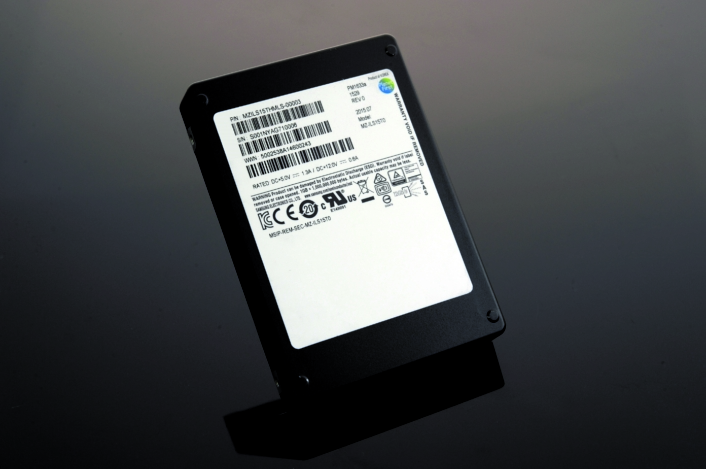
Samsung PM1633a (Samsung)
Need a lot of storage? Like, a lot a lot? Samsung has you covered.
The Korean tech giant on Thursday announced it has started shipping what it calls the "industry's largest solid state drive"—the 15.36TB "PM1633a" we first heard about in August. To put the size of this thing in perspective, the largest hard drives made by Seagate and Western Digital top out at 8 to 10TB.
Samsung's PM1633a is based on a 12Gb/s Serial Attached SCSI (SAS) interface, designed for use in enterprise storage systems. In a statement, Samsung's Senior Vice President of memory product planning and application engineering, Jung-bae Lee, said Samsung created the drive "to satisfy an increasing market need for ultra-high-capacity SAS SSDs."
"We are directing our best efforts toward meeting our customers' SSD requests," Lee said. "We will continue to lead the industry with next-generation SSDs, using our advanced 3D V-NAND memory technology, in order to accelerate the growth of the premium memory market while delivering greater performance and efficiency to our customers."
Samsung still has not yet revealed how much the massive drive will set you back, but don't expect it to come cheap. The company did mention that it will also release 7.68TB, 3.84TB, 1.92TB, 960GB, and 480GB versions later this year, so they should be a tad more budget-friendly.
"The secret sauce behind Samsung's 16TB SSD is the company's new 256Gbit (32GB) NAND flash die; twice the capacity of 128Gbit NAND dies that were commercialized by various chip makers last year," Ars Technica UK explained in August. "To reach such an astonishing density, Samsung has managed to cram 48 layers of 3-bits-per-cell (TLC) 3D V-NAND into a single die. This is up from 24 layers in 2013, and then 36 layers in 2014."
And the PM1633a? It uses between 480 and 500 of the new NAND flash chips.
Samsung said the drive allows for "significant improvements in the efficiency of IT system investments," offering "random read and write speeds of up to 200,000 and 32,000 IOPS respectively, and … sequential read and write speeds of up to 1,200MB/s."
This article originally appeared on PCMag.com.
